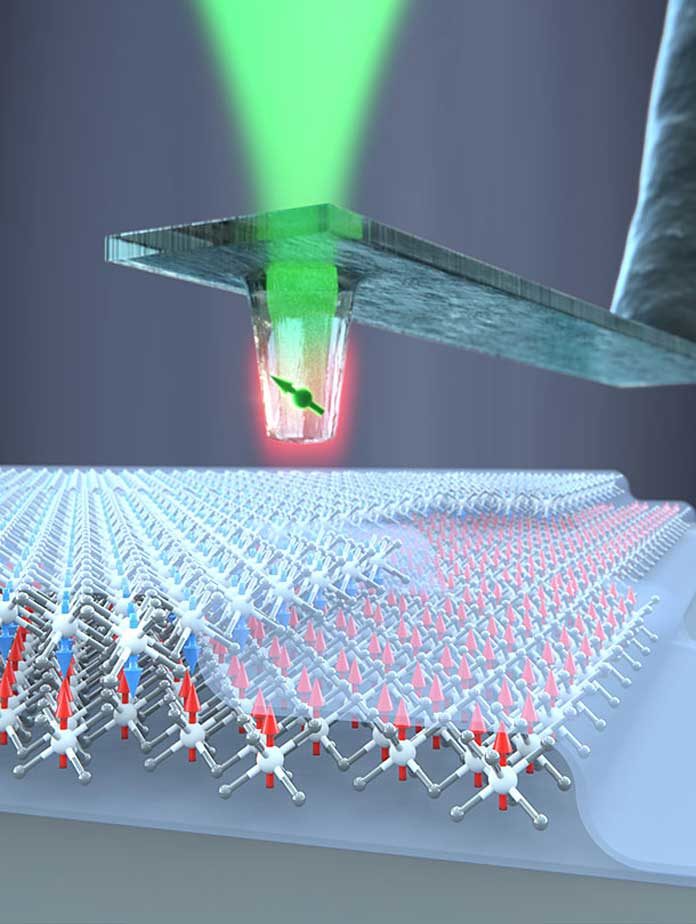The discovery of ferromagnetism in 2D van der Waals (vdW) crystals has generated widespread interest. Making further progress requires quantitative knowledge of the magnetic properties of vdW magnets on the nanoscale.
Physicists at the University of Basel, for the first ever time have gauged the magnetic properties of atomically thin van der Waals materials on the nanoscale using diamond quantum sensors. The sensors allow them to image the magnetization, localized defects and magnetic domains of atomically thin crystals of the vdW magnet.
Until now, it was literally impossible to determine the strength, alignment, and structure of these magnets quantitatively nor on the nanoscale. Physicists found that using diamond tips with single electron spins in an atomic force microscope may help such kind of studies.
Georg-H.-Endress Professor Patrick Maletinsky from the Department of Physics said, “Our method, which uses the individual spins in diamond color centers as sensors, opens up a whole new field. The magnetic properties of two-dimensional materials can now be studied on the nanoscale and even in a quantitative manner. Our innovative quantum sensors are perfectly suited to this complex task.”
Scientists then focused on magnetic properties of single atomic layers of chromium triiodide and found that the answer to a key scientific question about the magnetism of this material.
As a three-dimensional, bulk crystal, chromium triiodide is fully magnetically ordered. In the case of few atomic layers, however, only stacks with an odd number of atomic layers show a non-zero magnetization. Stacks with an even number of layers exhibit an antiferromagnetic behavior; i.e. they are not magnetized. The cause of this “even/odd-effect” and the discrepancy to bulk material was previously unknown.
This phenomenon is the result of a specific atomic arrangement of the layers, found physicists. During sample preparation, the individual chromium triiodide layers slightly move against one another. The resulting strain in the lattice means the spins of successive layers are unable to align in the same direction; instead, the spin direction alternates in the layers. With an even number of layers, the magnetization of the layers cancel out; with an odd number, the strength of the measured magnetization corresponds to that of a single layer.
However, when the strain in the stack is released—for example, by puncturing the sample—the spins of all layers can align in the same direction, as is also observed in bulk crystals. The magnetic strength of the entire stack is then consistent with the sum of the individual layers.
The study also opens interesting perspectives on how their innovative quantum sensors can be used in the future to study two-dimensional magnets in order to contribute to the development of novel electronic components.
